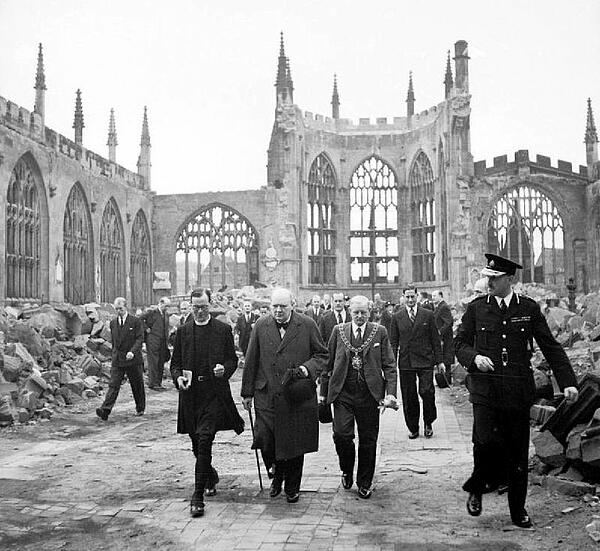The Bombing of Coventry in 1940
The bombing of Coventry occurred on the night of 14 November 1940. Known as ‘Operation Moonlight Sonata’, more than 400 German bombers attacked Coventry, leaving a trail of destruction. The city was bombed many times during World War Two, but the most devastating of these attacks happened on this night.
Before World War Two, Coventry was one of the largest manufacturing and engineering cities in Britain and its factories supplied Britain’s military at the beginning of the war. Since many workers lived nearby to the factories, attacks on these buildings put the civilian population at risk too.
The Germans meticulously planned for the raid on Coventry to ensure that all the targets were hit. They intended to create a firestorm in the city that would obliterate factories and hit the city’s residents morale.

The city was incredibly important to the war, but it was also poorly defended. It only had 40 anti-aircraft guns and 50 barrage balloons. It was hoped that the frequent fog that covered the city would be enough to defend the city.
The night of 14 November was very cold and clear - the perfect conditions for a raid. At 7.10pm the first air raid sirens went off and pathfinder aircraft launched parachutes to mark their targets. This first wave of bombing caused more than 200 fires.
The first powerful bombs were dropped at 9.30pm, causing extensive damage and destroying phone lines and roads. This left Coventry cut off from the outside world.
Although thousands of rounds were fired by the anti-aircraft guns, only one German bomber was shot down.
The water mains were destroyed during the attack, so the firefighters only had limited water to put out the raging fires.
By 11.50pm, a firestorm had engulfed St Michael’s Cathedral, completely gutting the building
By 1.30am the flames could be seen 100 miles away. This created the perfect target for an additional wave of bombers.
The bombing went on for 13 hours during the night. In total, 30,000 incendiaries along with 500 tons of high explosive bombs. In one night, more than 4,300 homes in Coventry were destroyed and around two-thirds of the city's buildings were damaged.
When Mass Observation, a social research organisation, entered the city the following day, it claimed the city had experienced a “collective nervous breakdown”. This report angered the government as it also criticised the lack of provision for the homeless and bereaved. It led the government to consider taking over the BBC, which commissioned ‘Mass Observation’.
There can be little doubt that the city’s morale was severely damaged after the raid. With rumours of a second wave of attacks the following evening, around 100,000 people flocked to the countryside to escape the city.
On 20 November, the first of two mass burials took place. In total 568 people were killed. Within two weeks of the bombing some factories had opened up. While food kitchens appeared, the city’s infrastructure had been severely damaged. Although people in the city were offered evacuation, only 300 took up the offer.
The bombing of Coventry has incited some controversy. Historians believe that the Prime Minister Winston Churchill may have known about plans for the attack up to two days before they occurred, but failed to launch an evacuation of the city. His intelligence supposedly came from the scientists at Bletchley Park in Buckinghamshire, who, in utmost secrecy, had cracked the Enigma code the Germans used for their military communications. From an intercepted message, they had discovered that the city was a target. But warning the city of Coventry and its residents of the imminent threat would have alerted the Germans to the fact that their codes had been cracked and their security breached.
See also: The Blitz of Belfast 1941
MLA Citation/Reference
"The Bombing of Coventry in 1940". HistoryLearning.com. 2025. Web.
